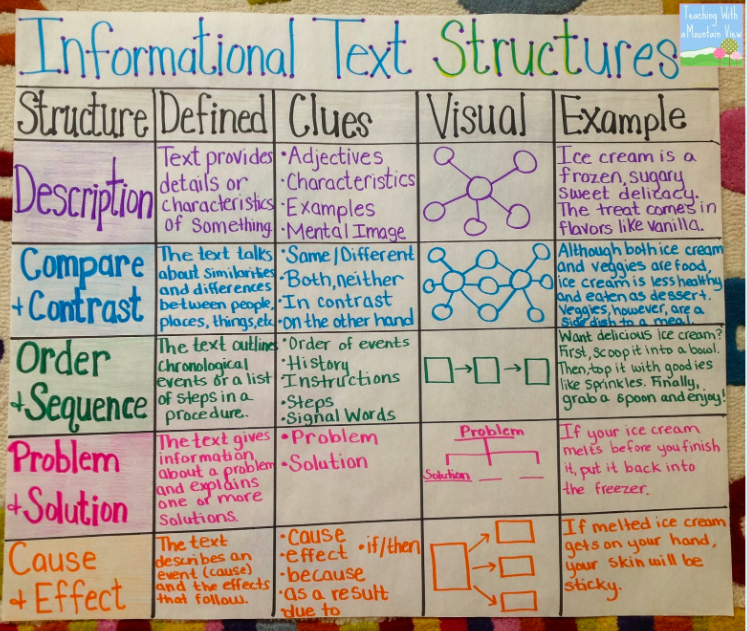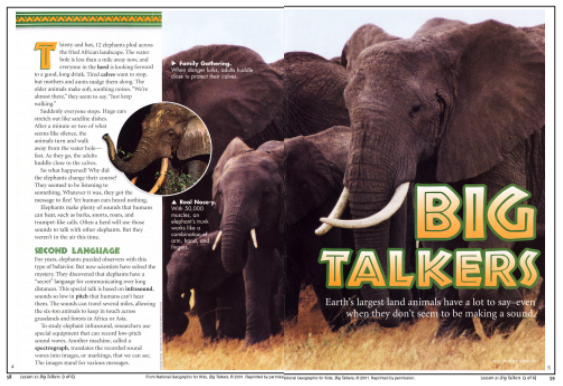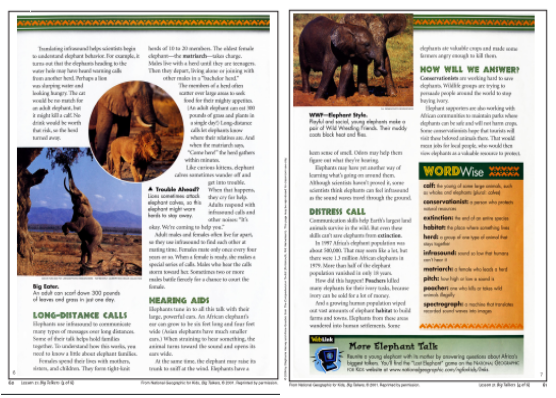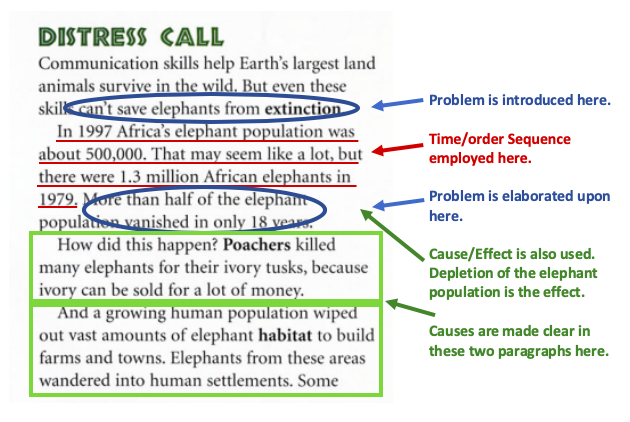Fifteen years ago in preparation to facilitate a PD session for teachers, I spent hours reading everything I could about text structure in expository texts. I was struck by how much I learned and how little I’d done to adequately prepare students to recognize and use knowledge of the types of structures authors use in expository texts.
You’ve seen all kinds of text structure charts, I’m sure.

In the past, I’ve taken time to teach structures and all the things associated with them. Upper elementary and early middle school students work hard to learn the various structures, word clues that signal the structures, and graphic organizers to use when authors employ the structures.
It’s a lot.
In fact, it’s too much.
Like all teachers, I know when kids aren’t “getting it”, it’s time to reflect. I came to see that teaching structures in isolation, and subsequently identifying them in texts is not working effectively for kids. I don’t want to keep making students use strategies that don’t work.
The last couple of years, I’ve been engaged in a little action research. When it’s time for me to instruct and model how readers think when they encounter various text structures, I’ve scaled it way down. One simple question and a little well-thought out guidance for readers is yielding more promising results.
Before I share the question and support I provide, I want to talk about what I discovered in my quest for answers.
First: Authors of expository text typically design their work with a macro-structure in mind. In various paragraphs, in order to support the reader, they use micro-structures within the overall macro-structure. Let me use an article from National Geographic for Kids (I first encountered this article in The Comprehension Toolkit by Harvey and Goudvis), to make my plea for simplicity.


If you read the the beginning of the article, it’s easy to be confused about the genre:
Thirsty and hot, 12 elephants plod across the fried African landscape. The water hole is less than a mile away now and everyone in the herd is looking for a good long drink. Tired calves want to stop, but mothers and aunts nudge them along. The older animals make soft, soothing noises, “We’re almost there,” they seem to say. “Just keep walking.”
Authors of informational text start by deciding what they need to tell their audience (topic) and they’re held to certain conventions about how to get the job done. Then they decide what elements they’ll employ to captivate the audience (craft). In this article, I’d say the author is primarily using the text structure of description to describe how research scientists have come understand how elephants communicate.
One reason the opening paragraph above might be confusing to apprentice readers is that it sounds more like a narrative selection. That’s one smart author, though, because he’s concerned his readers may not have sufficient background knowledge about elephants and their environment so he masterfully describes the setting.
Let’s focus on a couple of paragraphs in particular to see how authors often employ a collection of text structures within the same section (or paragraph). This speaks to the complexity of expository text and why we work so hard to help kids comprehend the genre.
On the last page of the article, these few paragraphs are a great example of the complexity of expository text. Look at the image below to see multiple text structures the author included just few paragraphs.

That’s a lot of comprehending to do in that excerpt. More and more, teachers are asking me to coach them through the process of how to instruct, model and assess how readers use text structures to make meaning of non-fiction text.
Second: In lieu of teaching all the structures in isolation, I’ve begun to teach them in real time. For example, students and I will read the first paragraph from the excerpt above and I stop to ask, “What’s the author doing here? He’s chosen to use a particular structure to support your comprehension. Has he used cause/effect here or introduced a problem/solution structure by including a problem here? “
We discuss what we see and why the author made the decision to introduce the problem of extinction. I also point out that once the problem is mentioned, my reader brain automatically signals me to be looking for the solution.
The discussion continues in this way, we read, I pose the question, “What’s the author doing here?” I offer possible text structures keeping it to two or three possibilities. Kids discuss again why the author chose the structure and how it promotes comprehension for the reader. The other important step here is for me to ask students which visual organizer(s) would be most helpful to hold on to the information as they continue reading.
There’s much more to share that I’ve learned over the years about navigating text structures in expository texts Part 2 coming next week…











Good post. I learn something totally new and challenging on websites I stumbleupon on a
daily basis. It will always be exciting to read through articles from other
writers and use something from their websites.
Wow, incredible blog layout! How long have you been blogging for?
you make blogging look easy. The overall look of your site is fantastic,
as well as the content!